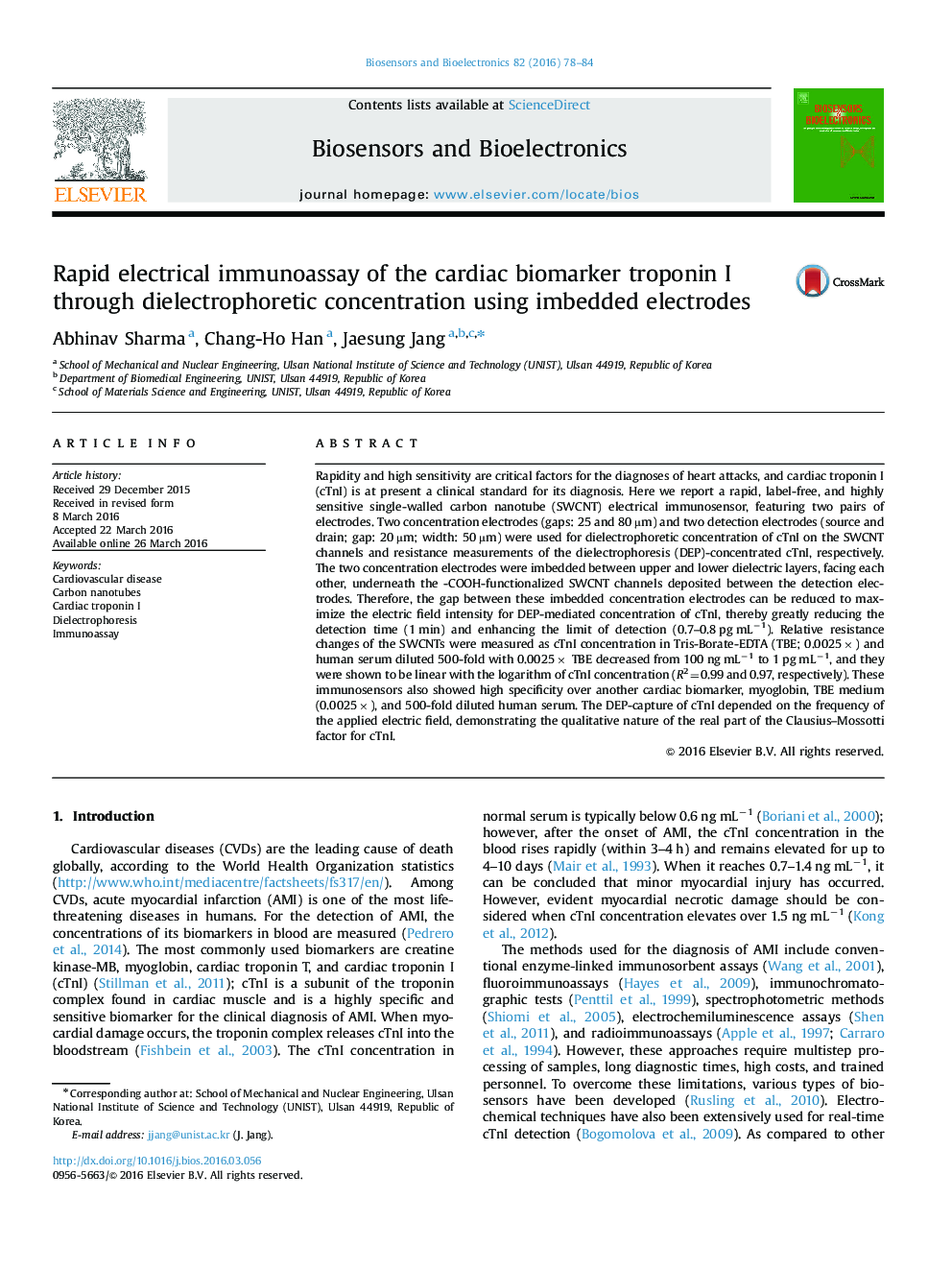| Article ID | Journal | Published Year | Pages | File Type |
|---|---|---|---|---|
| 866263 | Biosensors and Bioelectronics | 2016 | 7 Pages |
•A CNT electrical immunosensor with two pairs of electrodes for cTnI is presented.•The imbedded electrodes improved detection time (1 min) and detection limit.•The DEP characteristics of cTnI depend on the frequency of electric field.•A linear behavior and high specificity over myoglobin and media were observed.
Rapidity and high sensitivity are critical factors for the diagnoses of heart attacks, and cardiac troponin I (cTnI) is at present a clinical standard for its diagnosis. Here we report a rapid, label-free, and highly sensitive single-walled carbon nanotube (SWCNT) electrical immunosensor, featuring two pairs of electrodes. Two concentration electrodes (gaps: 25 and 80 µm) and two detection electrodes (source and drain; gap: 20 µm; width: 50 µm) were used for dielectrophoretic concentration of cTnI on the SWCNT channels and resistance measurements of the dielectrophoresis (DEP)-concentrated cTnI, respectively. The two concentration electrodes were imbedded between upper and lower dielectric layers, facing each other, underneath the -COOH-functionalized SWCNT channels deposited between the detection electrodes. Therefore, the gap between these imbedded concentration electrodes can be reduced to maximize the electric field intensity for DEP-mediated concentration of cTnI, thereby greatly reducing the detection time (1 min) and enhancing the limit of detection (0.7–0.8 pg mL−1). Relative resistance changes of the SWCNTs were measured as cTnI concentration in Tris-Borate-EDTA (TBE; 0.0025×) and human serum diluted 500-fold with 0.0025× TBE decreased from 100 ng mL−1 to 1 pg mL−1, and they were shown to be linear with the logarithm of cTnI concentration (R2=0.99 and 0.97, respectively). These immunosensors also showed high specificity over another cardiac biomarker, myoglobin, TBE medium (0.0025×), and 500-fold diluted human serum. The DEP-capture of cTnI depended on the frequency of the applied electric field, demonstrating the qualitative nature of the real part of the Clausius–Mossotti factor for cTnI.
